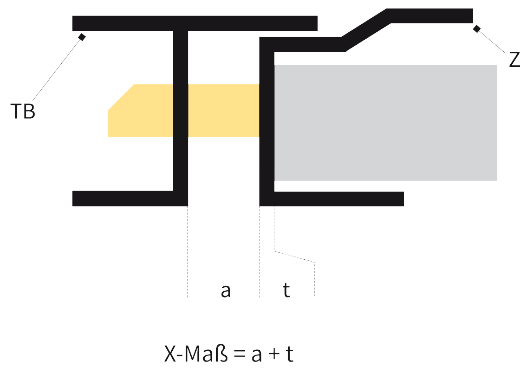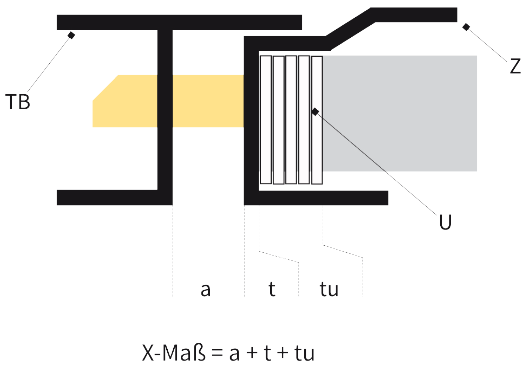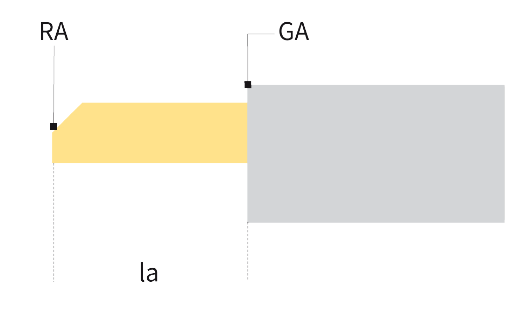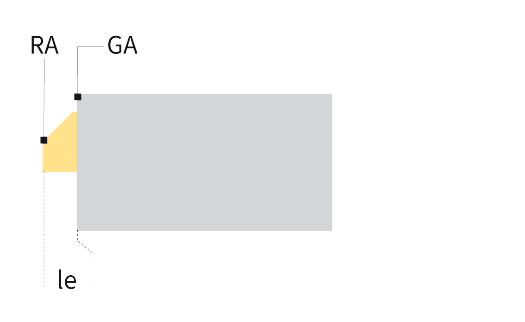Lift Gobbledygook.
Service is important to us and part of our corporate culture. That is why we provide you with useful information about the technical terms and abbreviations used in our catalogue on this site. We also offer you information on the protection classes described in the catalogue and valuable information on how to determine the X-dimension.
Overview of technical terms and abbreviations used in our catalogue:
AC alternating current DC direct current NC normally closed contact NO normally open contact CO changeover contact Ui rated isolation voltage Ith conventional thermal current in free air Uimp rated impulse withstand voltage Ue rated operational voltage Ie rated operational current AC-15 utilization category for alternating voltage with inductive load DC-13 utilization category for direct voltage with electromagnetic load B10d number of cycles at which 10 % of electromechanical components have failed dangerously ausgefallen sind TM mission time ED duty cycle in % Overview of the protection classes described in the catalogue:
IPxy index number x index number y IP00 no protection against contact and foreign bodies no water protection IP20 protection against solid objects greater than 12 mm no water protection IP40 protection against grain-shaped solid objects greater than 1 mm no water protection IP44 protection against grain-shaped solid objects greater than 1 mm front side protection against splashing water from all directions IP54 protection against dust front side protection against splashing water from all directions IP65 protection against dust ingress protection against water jets from all directions IP67 protection against dust ingress protection against immersion (in depths from 150 mm until 1000 mm no detrimental quantity of water may ingress with time limitation) Definition of the X-dimension:
X-dimension use The X-dimension is the length specification for the order-related production of the latch bolt. scope this instruction applies to the following door lock systems:
DL(F), DL(F)MO, EL(F), CL(F), CL(F) MOmeasuring equipment A tape measure or similar measuring tools are sufficient. tolerances X-dimension tolerance DL(F) and EL(F): X + 1.5mm
X-dimension tolerance CL(F): X +2 / -1 mmminimum length X-dimension the X-dimension must not be shorter than the following lengths: - door interlocks without oiled felt ring and holder: 5 mm
- door interlocks with oiled felt ring and holder: 14 mm
maximum length X-dimension the X-dimension must not exceed the following lengths: - DL(F), EL(F): 90 mm
- DL(F)MO: 60 mm
- CL(F), CL(F)MO: 35 mm
Measure with door lock installed:
We recommend carrying out the measurement with the door lock installed if possible.
You will find these two installation variants on site:proceeding:
- Measure the distance (a) between the door leaf (TB) and the frame (Z).
- Measure the thickness (t) of the frame sheet.
proceeding:
- Measure the distance (a) between the door leaf (TB) and the frame (Z).
- Measure the thickness (t) of the frame sheet.
- Measure the thickness (tu) of the support (U).
measuring at door interlock uninstalled:
at uninstalled door interlock you can determine the X-dimension in two ways:
note:
Ensure that the faulty closure device is cancelled at the door interlocks DLF, ELF and CLF.proceeding:
Measure the length (la) from the top edge of the latch bolt (RA) to the outside of the housing (GA).For the DL(F)- and EL(F) types applies:
X-dimension = la – 20 mmFor the CL(F) applies:
X-dimension = la – 14.5 mmnote:
Ensure that the latch bolt is pushed in completely.proceeding:
Measure the length (le) from the top edge of the latch bolt (RA) to the outside of the housing (GA).For the DL(F)- and EL(F) types applies:
X-dimension = le + 5 mmFor the CL(F) applies:
X-dimension = le + 3.5 mm
note:Within a lift installation different X-dimensions can occur.
If several or all door interlocks at a lift installation are replaced, please check the X-dimension at the doors concerned!




